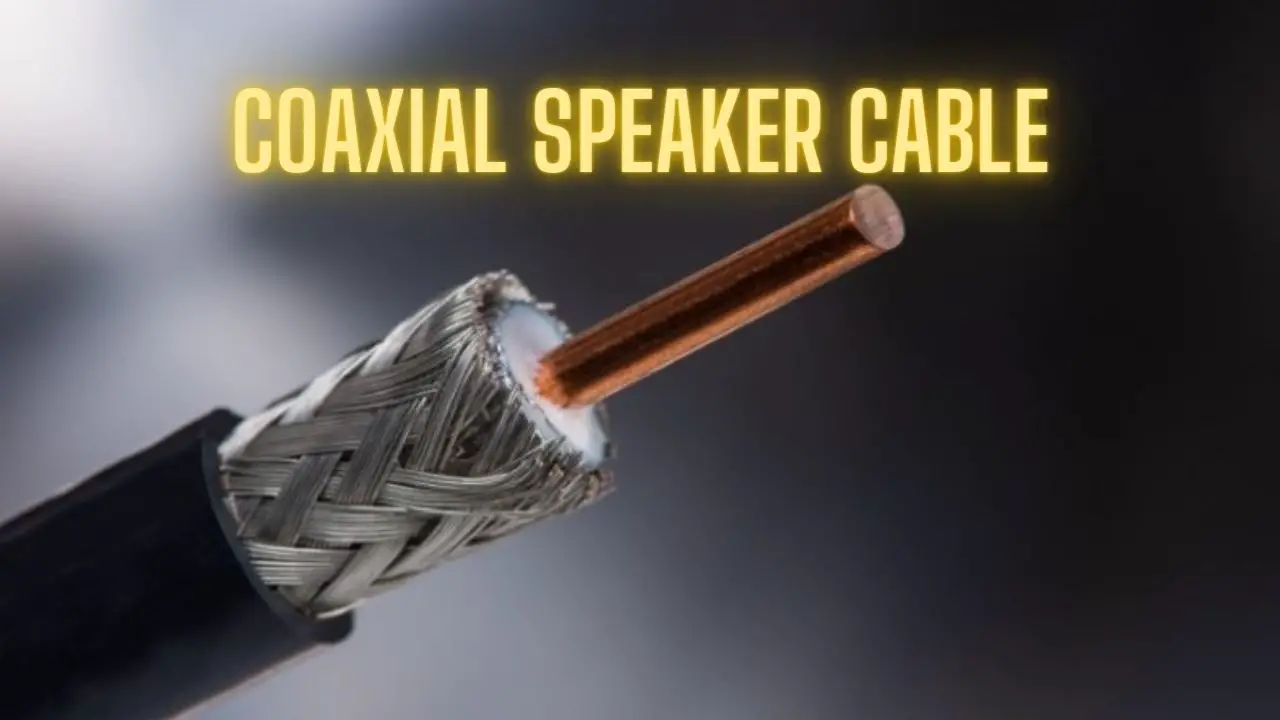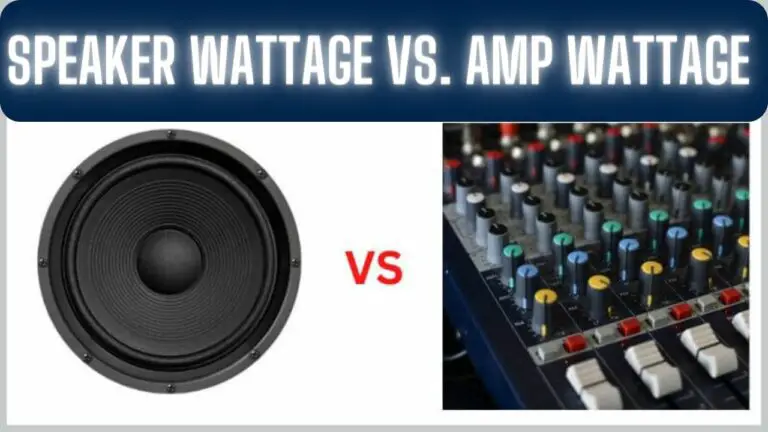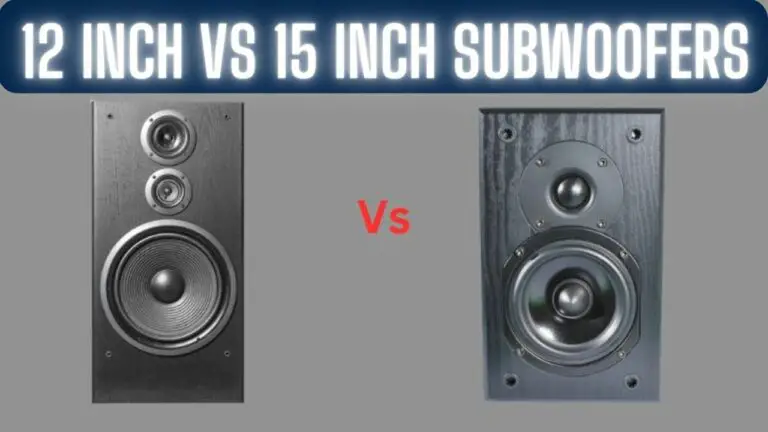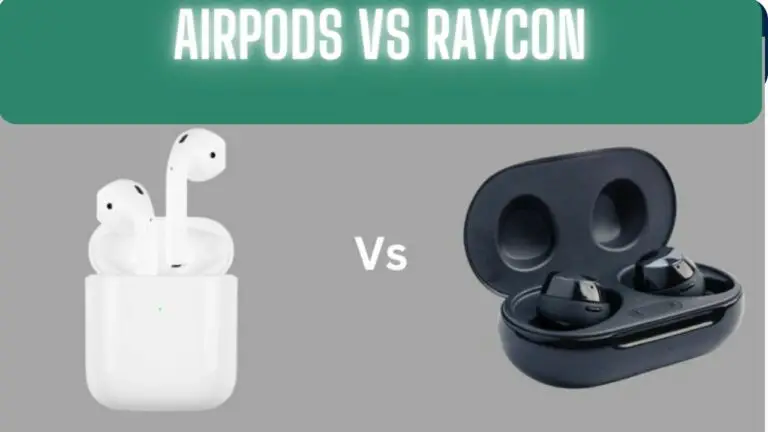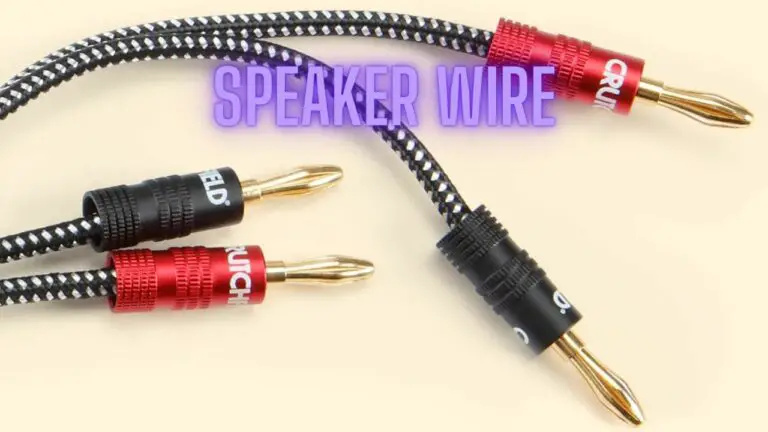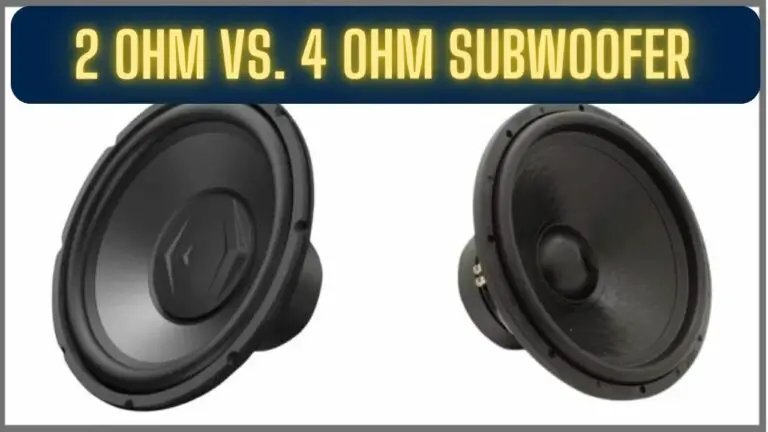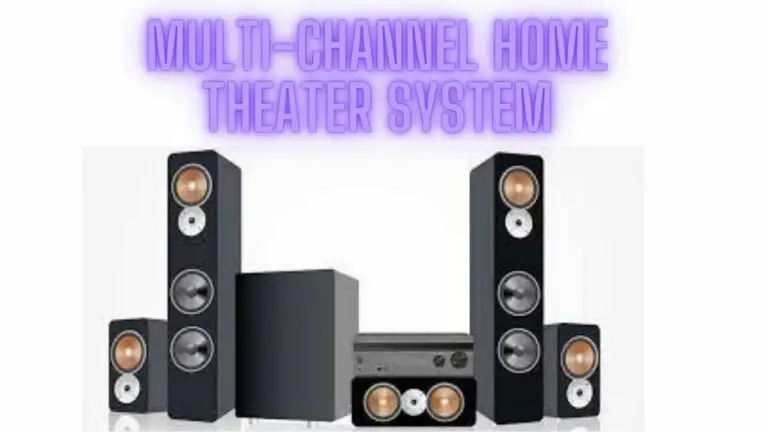Coaxial Speaker Cable Explained
Introduction
When it comes to optimizing audio quality in a home theatre or audio setup, the importance of speaker cables cannot be overstated. Among the various types available, coaxial speaker cables stand out for their ability to deliver reliable and high-quality audio signals. In this article, we’ll dive into the world of coaxial speaker cables, understanding what they are, their advantages, how they work, and why they matter for your audio experience.
Understanding Coaxial Speaker Cables
Coaxial speaker cables are designed to transmit audio signals from an amplifier or receiver to speakers. They consist of a central conductor, insulation, a shield, and an outer jacket. The coaxial design minimizes electromagnetic interference and ensures that the audio signal remains clean and clear throughout its journey.
Key Features and Advantages
- Shielding: Coaxial cables have a shielding layer that helps prevent external interference from affecting the audio signal. This shielding is crucial for maintaining signal integrity, especially in environments with other electronic devices.
- Reduced Signal Loss: The central conductor is typically made of copper or another conductive material, ensuring minimal signal loss as the audio travels from the source to the speakers. This leads to better audio fidelity and a more accurate representation of the original sound.
- Protection: The outer jacket provides protection against physical damage, making coaxial cables durable and long-lasting. This is especially important if the cables are placed in areas where they might be stepped on or moved frequently.
- Impedance Matching: Coaxial cables are designed to have consistent impedance throughout their length. This impedance matching helps prevent signal reflections and ensures that the audio signal remains stable and consistent.
How Coaxial Speaker Cables Work
The central conductor carries the audio signal from the source to the speakers. The insulation around the conductor prevents signal leakage and interference. The shielding layer surrounds the insulation, protecting the signal from external electromagnetic interference. The outer jacket provides additional protection and durability.
The coaxial design allows the cable to maintain a constant impedance, reducing the likelihood of signal degradation. The shield also prevents radio frequency interference (RFI) and electromagnetic interference (EMI) from affecting the audio signal, resulting in a cleaner and more accurate sound.
Choosing the Right Coaxial Speaker Cables
When selecting coaxial speaker cables, consider factors like cable length, gauge (thickness of the central conductor), and connector quality. Thicker gauge cables are suitable for longer distances, while high-quality connectors ensure a secure and reliable connection.
It’s essential to choose cables that are appropriate for your setup and audio equipment. Investing in good-quality cables can make a noticeable difference in audio quality, especially in high-fidelity systems.
Sizes of Coaxial Speaker Cable
When it comes to setting up an audio system, selecting the right speaker cables is crucial for achieving optimal sound quality. Coaxial speaker cables come in various sizes, and understanding their differences is essential to ensure efficient signal transmission and audio performance. In this article, we’ll delve into the different sizes of coaxial speaker cables, their implications, and how to choose the right size for your audio setup.
Understanding Coaxial Speaker Cable Sizes
Coaxial speaker cables are labeled with a gauge number, usually ranging from 12 to 18, with lower numbers indicating thicker cables. The gauge refers to the diameter of the central conductor inside the cable. Thicker cables have lower resistance and can transmit signals more effectively over longer distances.
Key Factors to Consider
- Cable Length: Longer cable runs require thicker cables to minimize signal loss. Thicker cables have lower resistance, which helps maintain the quality of the audio signal over extended distances.
- Impedance: Different cable sizes can impact the impedance of the cable. Ensuring that the cable impedance matches the impedance of your audio equipment is essential for preventing signal reflections and maintaining optimal performance.
- Audio Quality: Thicker cables generally offer better audio quality due to their lower resistance and reduced signal loss. This is especially noticeable in high-fidelity systems where small differences in cable quality can lead to improved audio fidelity.
Choosing the Right Coaxial Speaker Cable Size
Choosing the right cable size depends on factors such as the distance between your amplifier or receiver and your speakers, the impedance of your equipment, and the audio quality you aim to achieve.
- Short Distances (Up to 20 feet): For shorter cable runs, such as connecting bookshelf speakers to a nearby amplifier, a 16 or 18-gauge cable should suffice. These sizes provide a good balance between cost, flexibility, and signal quality.
- Medium Distances (20 to 50 feet): If your speakers are farther from your amplifier, consider using a thicker cable, such as 14 or 12 gauge. Thicker cables will help minimize signal loss and maintain audio quality over longer distances.
- Long Distances (50 feet and beyond): For lengthy cable runs, especially in large rooms or outdoor setups, opting for a 12 or even 10-gauge cable is recommended. These sizes offer lower resistance and better signal transmission over extended distances.
- High-Fidelity Systems: If you’re building a high-end audio system where audio quality is paramount, choosing a thicker cable (12 or 10 gauge) can contribute to improved sound fidelity and clarity.
Types of Coaxial Speaker Cable
When it comes to crafting a high-quality audio setup, selecting the right type of speaker cable is paramount. Among the array of options available, coaxial speaker cables stand out for their ability to transmit audio signals efficiently. In this article, we’ll delve into the different types of coaxial speaker cables, their features, and their applications to help you make informed decisions about optimizing your audio experience.
Types of Coaxial Speaker Cables
1. Copper Coaxial Speaker Cables: Copper coaxial cables are the most common and widely used type. They feature a central conductor made of copper, which is an excellent conductor of electrical signals. Copper cables offer good conductivity and low resistance, ensuring minimal signal loss over distances. These cables are suitable for most home audio setups, from basic stereo systems to surround sound configurations.
2. Oxygen-Free Copper (OFC) Coaxial Speaker Cables: Oxygen-Free Copper (OFC) cables take copper conductivity a step further. These cables are manufactured using copper that has been refined to reduce oxygen content, which helps prevent oxidation and maintains better signal transmission. OFC coaxial cables are often chosen for high-fidelity audio setups, where small details in audio quality matter.
3. Silver-Coated Copper Coaxial Speaker Cables: Silver-coated copper cables combine the benefits of both copper and silver. The central conductor is coated with a layer of silver, which is an even better conductor than copper. This configuration aims to deliver enhanced signal transmission and improved audio clarity. Silver-coated copper cables are often chosen by audiophiles seeking the highest possible audio quality.
4. Bi-Wire and Bi-Amp Coaxial Speaker Cables: Bi-wire and bi-amp cables offer a specialized configuration for connecting speakers with separate drivers. These cables split the audio signal into different paths, allowing you to connect different drivers (like woofers and tweeters) to separate amplifier channels. This setup aims to reduce interference between drivers and potentially improve audio quality.
5. High-End Audiophile Coaxial Speaker Cables: In the world of high-end audio, there are specialized coaxial speaker cables designed with meticulous attention to detail. These cables often incorporate advanced materials, advanced manufacturing techniques, and specialized shielding to achieve the utmost in audio fidelity. While these cables can be quite expensive, they’re favored by serious audiophiles and professionals seeking the best possible sound quality.
Choosing the Right Coaxial Speaker Cable Type
The right type of coaxial speaker cable depends on factors such as your audio setup, equipment quality, room size, and personal preferences. If you’re looking for a reliable cable for a typical home audio system, copper or OFC coaxial cables are excellent choices. For audiophiles or those with high-fidelity setups, exploring silver-coated or high-end audiophile cables might be worth considering.
It’s important to remember that while cable quality does play a role in audio performance, other factors such as speaker and amplifier quality, room acoustics, and proper setup also contribute to overall audio quality.
Types of Connectors for Coaxial Cables
Coaxial cables are used in various applications, ranging from audio and video transmission to networking and telecommunications. Different types of connectors are designed to terminate coaxial cables, ensuring a secure and reliable connection between devices. Here are some common types of connectors used for coaxial cables:
1. BNC (Bayonet Neill-Concelman): The BNC connector is commonly used in professional audio, video, and networking applications. It features a bayonet-style locking mechanism that provides a secure connection. BNC connectors are known for their quick and easy twist-on and twist-off functionality, making them suitable for applications that require frequent connections and disconnections.
2. RCA (Radio Corporation of America): RCA connectors are widely recognized as the red and white connectors used for audio and video connections. They are commonly found on consumer electronics such as TVs, DVD players, and amplifiers. While RCA connectors are most often associated with analog audio and video, they can also be used for digital coaxial audio connections.
3. F-Type: F-type connectors are commonly used in cable television, satellite television, and broadband internet applications. They are easily recognizable by their screw-on design and are widely used for coaxial connections in residential settings. F-type connectors provide a reliable connection and are often used for RF (Radio Frequency) signals.
4. SMA (SubMiniature version A): SMA connectors are frequently used in high-frequency and RF applications, including radio communication, Wi-Fi antennas, and test equipment. They are threaded connectors known for their robustness and ability to handle higher frequencies. SMA connectors come in various sizes, with SMA and RP-SMA (Reverse Polarity SMA) being the most common.
5. N-Type: N-type connectors are larger and designed for higher-power and higher-frequency applications. They are commonly used in wireless communication systems, radar, and instrumentation. N-type connectors provide good shielding and are suitable for transmitting signals at higher power levels.
6. TNC (Threaded Neill-Concelman): TNC connectors are similar to BNC connectors but feature a threaded design for a more secure connection. They are often used in applications where vibration or movement might cause a standard BNC connector to come loose. TNC connectors are commonly used in RF and wireless systems.
7. SMB (SubMiniature version B): SMB connectors are smaller versions of SMA connectors and are used in applications where space is limited. They are commonly found in RF, telecommunications, and automotive applications. SMB connectors use a snap-on mechanism for quick and easy connections.
8. MCX (Micro Coaxial): MCX connectors are even smaller versions of SMA connectors and are commonly used in compact devices like GPS receivers, portable electronics, and mobile devices. They use a snap-on mechanism similar to SMB connectors.
How Does Coaxial Cable Differ From Digital Coaxial Cables?
Coaxial cables and digital coaxial cables are terms that are often used interchangeably, but they have distinct differences in terms of their applications and the types of signals they carry. Let’s explore how these two types of cables differ:
Coaxial Cable:
A coaxial cable, in its general sense, is a type of cable that consists of a central conductor, an insulating layer, a shielding layer, and an outer jacket. The central conductor carries the electrical signal, while the shielding layer surrounds it to prevent electromagnetic interference from affecting the signal.
Coaxial cables are widely used for various applications, including audio, video, data transmission, and networking. They come in different variations, each designed to accommodate specific types of signals. When referring to audio, coaxial cables are used to carry analog audio signals, such as those from a CD player to an amplifier.
Digital Coaxial Cable:
Digital coaxial cables, also known as SPDIF (Sony/Philips Digital Interface) or RCA digital cables, are a specific type of coaxial cable designed for transmitting digital audio signals. These cables are commonly used to connect audio sources, such as CD players, DVD players, Blu-ray players, and gaming consoles, to audio receivers, amplifiers, or sound systems.
The main difference between digital coaxial cables and other types of coaxial cables lies in the type of signal they carry. Digital coaxial cables transmit digital audio data in the form of electrical pulses, which represent the ones and zeros of the digital audio signal. This allows for high-quality transmission of audio without the interference issues that can affect analog signals.
Key Differences:
- Signal Type:
- Coaxial Cable: Can carry various types of signals, including analog audio, video, data, and more.
- Digital Coaxial Cable: Specifically designed for transmitting digital audio signals.
- Use Case:
- Coaxial Cable: Used for a wide range of applications, from analog audio to video and data transmission.
- Digital Coaxial Cable: Primarily used for connecting audio sources to audio receivers or sound systems, ensuring high-quality digital audio transmission.
- Interference and Quality:
- Coaxial Cable: Analog signals can be susceptible to interference, leading to potential degradation in signal quality.
- Digital Coaxial Cable: Digital signals are less susceptible to interference, resulting in more reliable and consistent audio transmission.
In summary, the term “coaxial cable” is a general category that encompasses various types of cables, while “digital coaxial cable” specifically refers to a coaxial cable designed for transmitting digital audio signals. Digital coaxial cables are preferred for maintaining audio quality when transmitting digital audio from sources to audio equipment.
Coaxial Vs Optical Vs HDMI cables
Coaxial, optical, and HDMI cables are all used for transmitting audio and video signals, but they have different characteristics and applications. Let’s compare these three types of cables to understand their differences and when to use each one:
1. Coaxial Cable:
Usage: Coaxial cables are used for various applications, including audio, video, networking, and cable television. They are often used for analog audio and video connections, as well as digital audio connections.
Advantages:
- Can carry both analog and digital signals.
- Durable and resistant to physical damage.
- Suitable for relatively short distances without significant signal loss.
- Commonly available and cost-effective.
Limitations:
- Susceptible to electromagnetic interference (EMI).
- Signal quality can degrade over longer distances compared to other cables.
- Less suitable for high-definition video or high-resolution audio.
2. Optical Cable (Toslink or SPDIF):
Usage: Optical cables are primarily used for transmitting digital audio signals, such as those from audio sources to audio receivers or sound systems.
Advantages:
- Immune to electromagnetic interference (EMI) and radio frequency interference (RFI).
- Capable of transmitting high-quality digital audio signals without degradation.
- Suitable for longer distances without significant signal loss.
- Supports various audio formats, including Dolby Digital and DTS.
Limitations:
- Fragile and can be easily damaged if bent or twisted.
- Limited to transmitting audio signals; cannot carry video signals.
3. HDMI Cable (High-Definition Multimedia Interface):
Usage: HDMI cables are commonly used to transmit both high-definition video and audio signals between devices, such as TVs, Blu-ray players, gaming consoles, and audio receivers.
Advantages:
- Supports both high-definition video and multi-channel audio transmission.
- Can transmit video resolutions up to 4K (Ultra HD) and beyond.
- Supports audio formats like Dolby TrueHD, DTS-HD Master Audio, and more.
- Includes features like Consumer Electronics Control (CEC) for device control.
Limitations:
- Prone to signal loss over longer distances compared to other cables.
- Vulnerable to electromagnetic interference (EMI) and radio frequency interference (RFI).
- Some older HDMI versions may not support the latest video and audio formats.
Choosing the Right Cable:
- Use Coaxial Cables for: Analog audio and video connections, digital audio connections for short distances, and basic networking applications.
- Use Optical Cables for: Transmitting digital audio signals without interference, especially for longer distances.
- Use HDMI Cables for: High-definition video and multi-channel audio transmission between modern audio/video devices, gaming consoles, Blu-ray players, and TVs.
Ultimately, the choice of cable depends on your specific needs, devices, and the quality of audio and video you’re aiming for. Combining these cables appropriately within your setup can ensure optimal signal transmission and the best possible audio and video experience.
Coaxial Speaker Cable FAQS
What is a coaxial speaker cable?
A coaxial speaker cable is a type of cable designed to transmit audio signals from an amplifier or receiver to speakers. It consists of a central conductor, insulation, shielding, and an outer jacket. The coaxial design minimizes electromagnetic interference, resulting in efficient and clean audio signal transmission.
How does a coaxial speaker cable work?
The central conductor carries the audio signal, surrounded by insulation to prevent signal leakage. The shielding layer surrounds the insulation, protecting the signal from external electromagnetic interference. This design ensures a stable and clean audio signal transmission.
Can I use coaxial speaker cables for both analog and digital audio?
Yes, coaxial speaker cables can transmit both analog and digital audio signals. However, they are more commonly associated with analog audio connections, while digital coaxial cables (like SPDIF) are specifically designed for transmitting digital audio.
What’s the difference between analog and digital coaxial cables?
Analog coaxial cables transmit analog audio signals, while digital coaxial cables transmit digital audio signals. Digital coaxial cables are designed to prevent signal degradation and are commonly used for connecting audio sources to audio receivers or sound systems.
Are coaxial speaker cables better than regular speaker wires?
Coaxial speaker cables offer advantages such as reduced electromagnetic interference and efficient signal transmission. However, regular speaker wires can still provide good audio quality for shorter distances and less demanding setups.
How do I choose the right gauge (thickness) of coaxial speaker cable?
The gauge of the cable depends on the distance between your amplifier or receiver and your speakers. Thicker gauges (lower numbers) are suitable for longer distances to minimize signal loss. For shorter distances, thinner gauges may suffice. Consider your setup’s requirements when choosing the gauge.
Can I make my own coaxial speaker cables?
Yes, you can make your own coaxial speaker cables if you have the necessary tools and expertise. However, proper termination and shielding are crucial for maintaining signal integrity. If you’re not experienced, it’s recommended to purchase pre-made cables or seek professional assistance.
Do higher-priced coaxial speaker cables provide better audio quality?
Higher-priced coaxial cables might offer additional features or enhanced construction, but audio quality improvements may be subtle or negligible. Consider your setup’s needs, your budget, and the desired audio quality when choosing a cable.
Can I use coaxial speaker cables for home theatre systems?
Yes, coaxial speaker cables are suitable for home theatre systems. They can efficiently transmit audio signals from your amplifier or receiver to your speakers, contributing to a balanced and immersive audio experience.
How do I ensure a proper connection with coaxial speaker cables?
Ensure that the connectors are securely plugged into the corresponding jacks on your amplifier/receiver and speakers. Twist-on connectors or connectors with locking mechanisms can help ensure a secure fit.
Conclusion
Coaxial speaker cables are an essential component of any audio setup, offering reliable signal transmission and enhanced audio fidelity. Their shielding, reduced signal loss, and impedance consistency contribute to a clean and accurate audio experience. Whether you’re setting up a home theatre system, a stereo setup, or a professional audio arrangement, coaxial speaker cables play a significant role in delivering optimal sound quality. By understanding their features, advantages, and how they work, you can make informed decisions when choosing the right cables for your audio needs.

